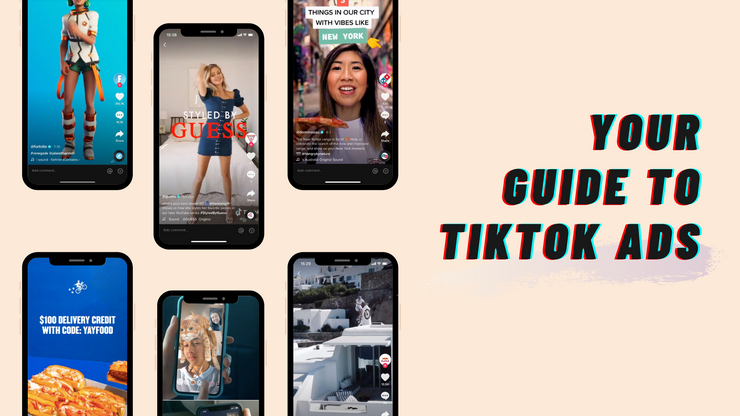TikTok has emerged as one of the most popular social media platforms, with millions of active users worldwide. With its highly engaged user base and unique content format, TikTok presents an excellent platform for businesses to advertise and reach their target audience. It offers a unique opportunity for businesses to reach a young and engaged audience through advertising. In this comprehensive guide, we will delve deeper into the world of advertising on TikTok, exploring its benefits, ad formats, targeting options, and best practices and also walk you through the process of advertising on TikTok, providing you with step-by-step instructions to help you create successful ad campaigns.
Advertising on TikTok
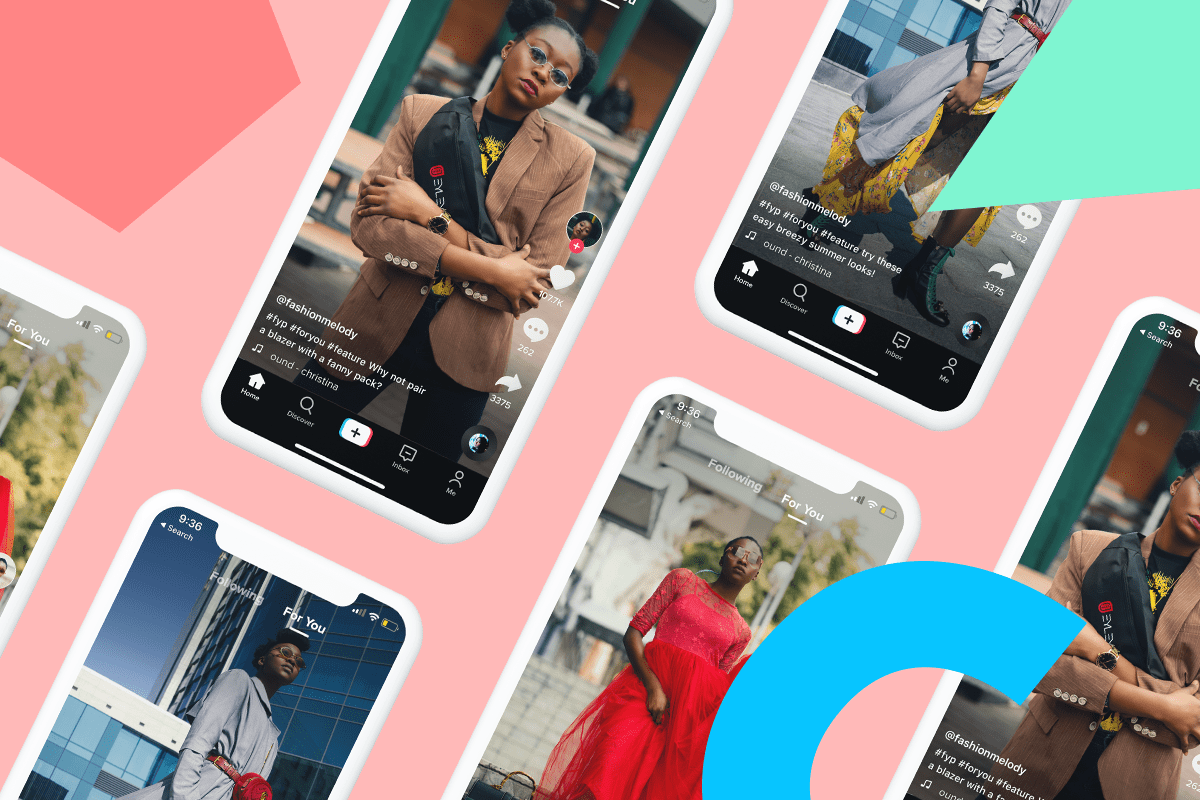
TikTok is quickly becoming the go-to platform for digital marketers looking to reach a younger audience. With more than 800 million active users worldwide, it’s no wonder why so many brands are turning to TikTok advertising. But what exactly can you do with TikTok Ads?
First off, let’s start with the basics of creating an ad on TikTok. You can create ads in three different formats: In-Feed Ads, Brand Takeovers, and Hashtag Challenges.
Each format has its own unique features that allow you to customize your message and target specific audiences based on their interests or behaviors online.
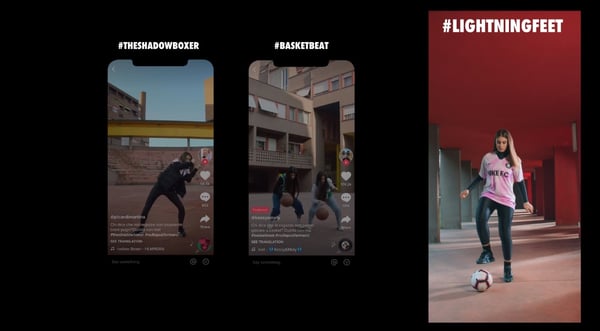
In-Feed Ads are full-screen video ads that appear within people’s feeds as they scroll through content from other users they follow or discover videos related to their interests in the Discover section of the app.
These types of ads typically last up to 15 seconds and feature eye-catching visuals along with a call-to-action button at the end which leads viewers directly to your website or landing page where they can take further action such as making a purchase or signing up for something etc.
Brand Takeover campaigns involve taking over someone’s entire feed when they open up their app by displaying either an image ad, GIF ad, or short video clip before any other content appears. This type of campaign allows advertisers maximum visibility since these takeover campaigns always get a 100% viewability rate since all viewers will see them first thing when opening TikTok.
Lastly, we have hashtag challenges which involve encouraging users to participate in branded challenges using hashtags created specifically by advertisers themselves. For example, if Nike wanted to promote one particular product then could leverage a hashtag challenge by asking people to share creative ways to use this product while tagging friends and also using the same hashtag. This type of challenge great way to engage current customers and build brand awareness among potential new ones too.
All three types of advertising offer great opportunities to reach large audiences but important remember each format requires a slightly different approach in order successfully capture the attention and desired results. So make sure to understand how each works properly and plan out a strategy accordingly.
Why Advertise on TikTok?
- Massive User Base: TikTok boasts over a billion active users globally, with a significant portion comprising Gen Z and millennial demographics. This demographic is highly sought after by brands due to its purchasing power and influence.
- High Engagement: TikTok users spend a substantial amount of time on the platform, often scrolling through an endless feed of short videos. This presents a valuable opportunity for advertisers to capture the attention of users and drive brand awareness.
- Viral Potential: TikTok’s algorithm is designed to surface content based on user preferences, making it easier for ads to gain traction and potentially go viral. This unique viral potential can significantly amplify brand reach and visibility.
- Creative Opportunities: TikTok encourages users to be creative and authentic. This aligns well with advertising, as brands can leverage TikTok’s creative tools to produce engaging ad content that resonates with users.
Ad Formats on TikTok:
- In-Feed Ads: These are native ads that appear within users’ TikTok feeds as they scroll. In-feed ads support various call-to-action buttons, such as website clicks or app downloads, allowing brands to drive traffic to their desired destinations.
- Brand Takeovers: These are full-screen ads that appear when users open the TikTok app. They offer maximum visibility and impact, making them effective for promoting new products, movie releases, or brand announcements.
- Hashtag Challenges: Brands can create sponsored hashtag challenges to engage users and encourage them to create content around a specific theme or idea. This format can generate user-generated content (UGC) and drive organic brand awareness.
- Branded Effects: TikTok offers branded effects, such as filters, stickers, and AR experiences, that users can apply to their videos. Brands can create custom effects that align with their identity, allowing users to interact and engage with their brand in a fun and memorable way.
TikTok Targeting Options:
TikTok provides robust targeting options to ensure your ads reach the right audience. Here are some key targeting parameters:
- Demographics: Target users based on age, gender, location, language, and device type.
- Interests: Narrow down your audience based on their interests and preferences, such as fitness, fashion, gaming, or music genres.
- Custom Audiences: Upload your own customer lists or use pixel data to target users who have interacted with your brand before.
- Lookalike Audiences: Reach users who share similar characteristics and behaviors to your existing customer base.
How Much Does It Cost to Advertise on TikTok?
The cost of advertising on TikTok can vary depending on several factors, including your ad format, targeting options, campaign objectives, competition, and the overall demand for advertising on the platform. TikTok offers different pricing models to accommodate various budget sizes and advertising goals. Here are some key considerations regarding the cost of advertising on TikTok:
- Ad Format: Each ad format on TikTok may have different pricing structures. For example, in-feed ads are typically priced on a cost-per-click (CPC) or cost-per-impression (CPM) basis, while brand takeovers and hashtag challenges may have fixed pricing options.
- Targeting and Reach: The size and specificity of your target audience can influence the cost of your ad campaign. Targeting a broad audience may result in higher costs, while targeting a more niche audience might be more cost-effective.
- Bidding Strategy: TikTok allows advertisers to choose their bidding strategy, such as cost-per-click (CPC) or cost-per-thousand-impressions (CPM). The bidding strategy you select can impact the cost of your ads.
- Campaign Duration and Budget: The duration of your campaign and the budget you allocate will also affect the overall cost. Longer campaigns or higher budgets may lead to higher costs, but they can also provide greater exposure and potential results.
- Competition and Demand: The competitiveness of your industry and the overall demand for TikTok advertising can influence the cost. Industries with high competition may require higher bids to secure ad placements.
It’s important to note that TikTok’s advertising platform provides a self-serve auction-based system, where advertisers set their budgets and bids based on their objectives. This means that the cost of advertising on TikTok can vary from one advertiser to another, as it depends on the specific campaign parameters and the market conditions at any given time.
To get a more accurate estimate of the cost to advertise on TikTok, it is recommended to explore the platform’s Ads Manager, where you can set up campaigns, define your targeting options, and get real-time pricing information based on your preferences.
Ultimately, the cost of advertising on TikTok should be viewed as an investment in reaching a highly engaged and potentially valuable audience. It’s important to carefully plan your campaign, monitor performance, and optimize your strategy to maximize the return on your advertising investment.
TikTok Advertising Target Audiences
TikTok offers robust targeting options to help advertisers reach their desired audiences effectively. By leveraging these targeting features, advertisers can narrow down their audience based on various parameters. Here are some key targeting options available for TikTok advertising:
- Demographics: Advertisers can target users based on demographic factors such as age, gender, location, language, and device type. This allows you to tailor your ads to specific segments of the TikTok user base.
- Interests and Behavior: TikTok allows targeting based on user interests and behaviors. You can select from a wide range of interest categories such as fitness, fashion, gaming, music genres, and more. Additionally, you can target users based on their past behavior, including their interactions with specific types of content or engagement with certain brands.
- Custom Audiences: TikTok enables advertisers to upload their own customer lists or use pixel data to create custom audiences. This allows you to target users who have interacted with your brand previously, either through your website, app, or other channels.
- Lookalike Audiences: With lookalike audiences, TikTok helps you expand your reach by targeting users who share similar characteristics and behaviors to your existing customer base. By analyzing data from your custom audiences, TikTok identifies users who have a higher probability of being interested in your products or services.
- Behavioral Targeting: TikTok’s behavioral targeting options allow you to reach users based on their specific actions on the platform. For example, you can target users who have liked or shared videos related to a particular topic or users who have engaged with specific hashtags.
It’s important to note that while TikTok provides these targeting options, it’s essential to strike a balance between targeting specificity and potential reach. Narrowing down your audience too much may limit the reach of your ads, while being too broad may lead to reaching users who are less likely to be interested in your offerings. Regularly monitor the performance of your campaigns and make adjustments to your targeting strategy as needed.
To maximize the effectiveness of your TikTok advertising, consider conducting research and understanding your target audience’s preferences, behaviors, and interests. This will help you tailor your ad content and messaging to resonate with your desired audience and increase the likelihood of driving meaningful engagement and conversions.
Overall, TikTok’s diverse targeting options provide advertisers with the flexibility to reach specific segments of the platform’s user base, allowing for more effective and personalized advertising campaigns.
TikTok Statistics
TikTok has experienced tremendous growth and popularity since its launch. Here are some key statistics that highlight the platform’s reach, user engagement, and overall impact:
- Global Reach:
- As of September 2021, TikTok has surpassed 1 billion monthly active users worldwide.
- TikTok is available in over 150 countries and supports 75 languages.
- User Demographics:
- TikTok has a strong presence among younger audiences, particularly Gen Z and millennials.
- In the United States, about 60% of TikTok users are between the ages of 16 and 24.
- Globally, the majority of TikTok users are under the age of 30.
- User Engagement:
- TikTok users spend a significant amount of time on the platform. On average, users spend about 52 minutes per day on TikTok.
- The average TikTok user opens the app 8 times per day.
- TikTok’s algorithm-driven content feed keeps users engaged by presenting them with personalized videos based on their interests and preferences.
- Video Views and Content:
- TikTok videos have the potential to go viral, contributing to their massive reach and engagement.
- The platform’s videos have been viewed trillions of times, showcasing the immense popularity and consumption of content on TikTok.
- Influencer Culture:
- TikTok has a vibrant influencer community, with many creators gaining substantial followings and influencing trends.
- Influencers on TikTok have the ability to drive significant brand awareness and engagement through sponsored content and collaborations.
- Advertising Opportunities:
- TikTok’s advertising platform has grown rapidly, providing businesses with various ad formats to engage with the user base.
- TikTok offers options such as in-feed ads, brand takeovers, hashtag challenges, and branded effects to cater to different advertising goals.
- Global Impact:
- TikTok has had a significant impact on popular culture, with its trends, dances, and challenges often spreading beyond the platform to other social media channels and mainstream media.
- The platform has been instrumental in launching the careers of many artists, musicians, and content creators.
It’s important to note that these statistics are based on information available up until September 2021. TikTok’s user base and engagement continue to evolve, so it’s advisable to seek updated data and insights for the most accurate and current understanding of the platform’s statistics.
How to Advertise on TikTok Step by Step
Step 1: Set Up Your TikTok Ads Account
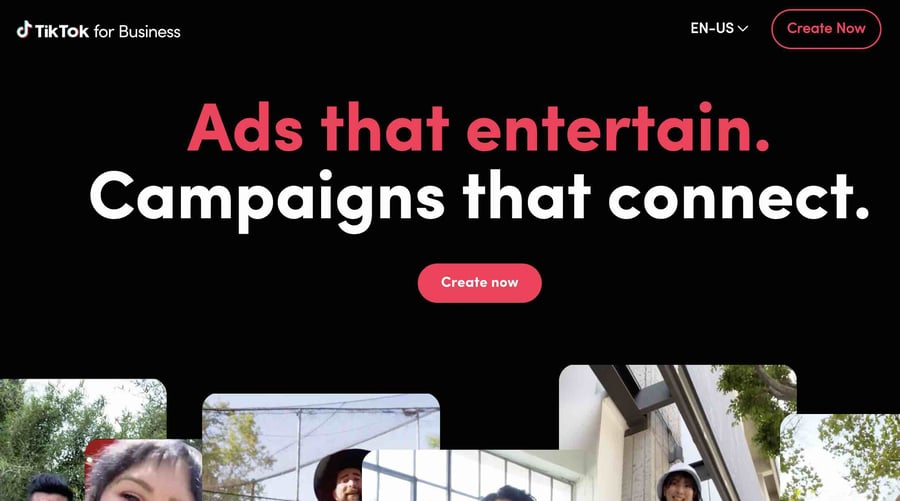
To begin advertising on TikTok, you need to create an Ads Manager account. Visit TikTok’s Ads Manager website (ads.tiktok.com) and sign up using your business account credentials. Once your account is set up, you’ll have access to various advertising features and campaign management tools.
Step 2: Define Your Advertising Objectives
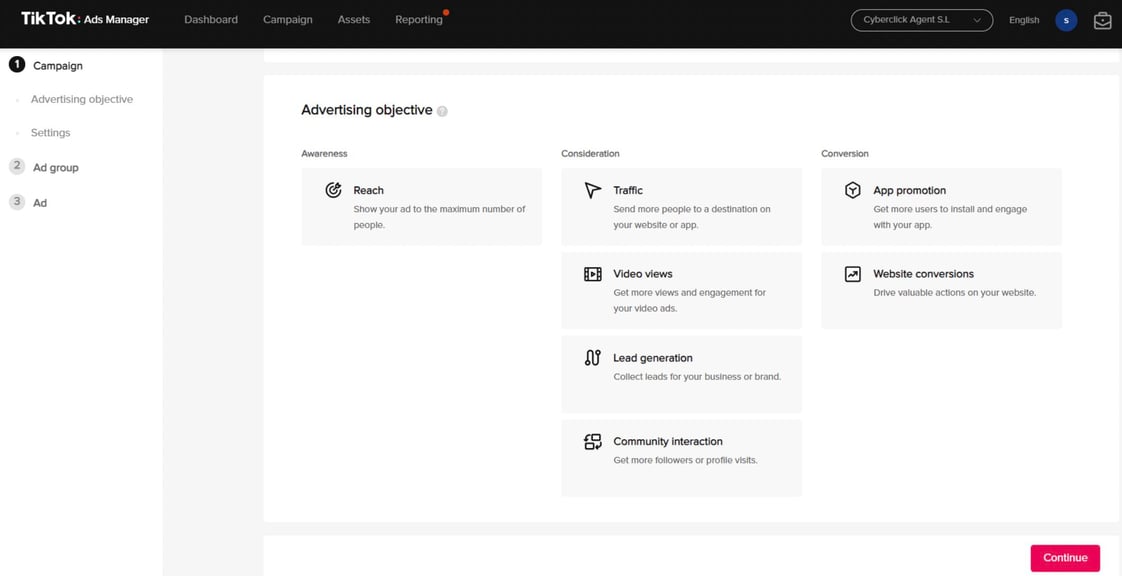
Before launching your ad campaign, clearly define your goals and objectives. Are you looking to increase brand awareness, drive website traffic, or boost conversions? Identifying your objectives will help you choose the right ad format and optimize your campaign accordingly.
Step 3: Choose the Right Ad Format
TikTok offers several ad formats to choose from, including in-feed ads, brand takeovers, hashtag challenges, branded effects, and more. Each format caters to different advertising goals and user experiences. Select the ad format that aligns with your campaign objectives and resonates with your target audience.
Step 4: Target Your Audience
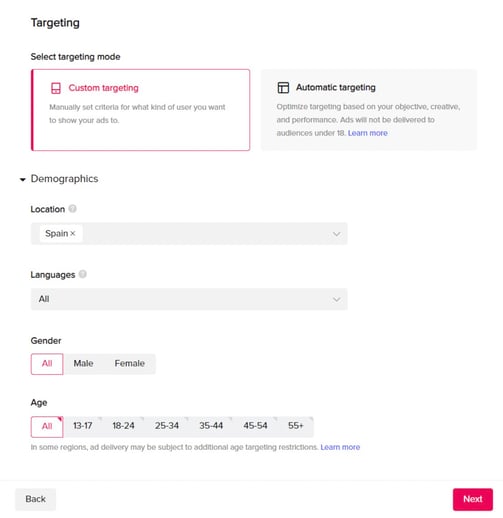
TikTok provides robust targeting options to ensure your ads reach the right users. You can target based on demographics (age, gender, location), interests, behavior, and even custom audiences. Take advantage of these targeting features to narrow down your audience and maximize the effectiveness of your ad campaign.
Step 5: Set Your Budget and Bidding Strategy
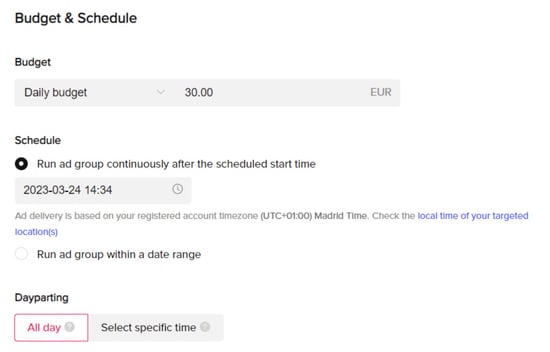
Determine your ad campaign budget and select the appropriate bidding strategy. TikTok offers options like daily budget, total budget, and bidding based on impressions, clicks, or conversions. Set a budget that aligns with your marketing goals and monitor your campaign’s performance to optimize your spending.
Step 6: Create Engaging Ad Content
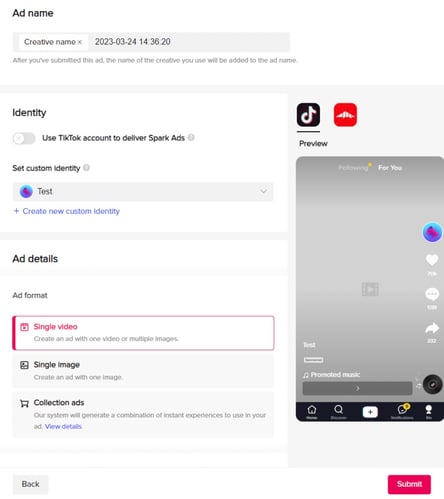
Compelling ad content is crucial for capturing users’ attention on TikTok. Keep your ads short, visually appealing, and authentic. Leverage TikTok’s creative features such as music, effects, and stickers to make your ads stand out. Experiment with different creative variations and track their performance to refine your content strategy.
Step 7: Monitor and Optimize Your Campaign
Regularly monitor your ad campaign’s performance using TikTok’s Ads Manager. Analyze metrics like impressions, click-through rates, engagement, and conversions to gauge the effectiveness of your ads. Identify areas for improvement and make data-driven optimizations, such as adjusting targeting, modifying creatives, or refining bidding strategies.
Step 8: Leverage TikTok’s Influencer Marketing
Collaborating with TikTok influencers can amplify your advertising efforts. Identify relevant influencers within your niche and explore partnership opportunities. Influencers can help create sponsored content, participate in hashtag challenges, or promote your products/services, leveraging their established following and engagement.
Step 9: Test and Iterate
Successful advertising on TikTok requires a willingness to test and iterate. Experiment with different ad formats, targeting options, and creative strategies to find what works best for your brand. Continuously analyze your campaign’s performance and optimize accordingly to drive better results.
Step 10: Measure Success and ROI
Finally, measure the success of your TikTok ad campaigns. Track key performance indicators (KPIs) aligned with your objectives, such as increased website traffic, higher brand awareness, or improved sales. Assess the return on investment (ROI) to evaluate the effectiveness of your advertising efforts and make data-backed decisions for future campaigns.
Best Practices for TikTok Advertising:
- Create Attention-Grabbing Content: TikTok is all about creativity and authenticity. Develop engaging ad content that aligns with the platform’s style and captures users’ attention within the first few seconds.
- Keep it Short and Snappy: TikTok videos are typically short, ranging from 15 to 60 seconds. Craft concise and impactful ads that deliver your message effectively within this timeframe.
- Leverage Trends and Challenges: Stay up to date with the latest TikTok trends and challenges. Incorporate them into your ad campaigns to boost engagement and relevancy.
- Collaborate with Influencers: Partnering with TikTok influencers can help amplify your brand’s reach and credibility. Identify influencers who align with your target audience and collaborate on sponsored content or hashtag challenges.
- Test and Optimize: Continuously monitor the performance of your ad campaigns and experiment with different ad formats, creatives, and targeting options. Analyze metrics and optimize your campaigns to maximize results.
Conclusion
Advertising on TikTok offers an incredible opportunity for businesses to engage with a vast and highly active user base. By leveraging the platform’s diverse ad formats, targeting options, and creative tools, brands can effectively reach their target audience, drive brand awareness, and achieve their marketing objectives. By following this step-by-step guide, you can navigate the TikTok advertising landscape effectively, create compelling ad campaigns, and achieve your marketing goals. As TikTok continues to grow and evolve, staying abreast of the latest trends and best practices will be key to successful advertising on this dynamic platform. Remember to stay creative, monitor your campaigns, and adapt your strategies to optimize your results on this dynamic and rapidly evolving platform.
